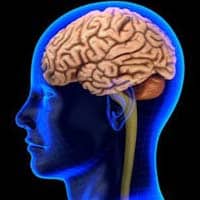Training
There is a range of factors that have produced the achievement gap. Understanding how these factors manifest themselves in child development, behavioral problems, and academic failure is essential if teachers are to have success in closing the achievement gap. This presentation provides an overview of the essential factors impacting child development, behaviors, and performance. It provides interventions that can be instituted both in the classroom and school-wide. These strategies have been correlated to improved behavior and academic performance even in students that do not come to school ready to learn. The discipline model provides a comprehensive approach that even addresses the needs of the chronic offender. It is designed to help schools implement a systemic discipline program that works with the occasional offender to the chronic offender. The program helps teachers maintain locus of control in the classroom while helping administrators support that goal through clear guidelines that build sense for school, teacher, and student. Unique differences in the structure and functioning of the male and female brain have strong implications on how to best educate boys and girls. These findings have caused some to conclude that the structural differences impact how both males and females see the world. These distinctions not only impact learning, but also how we should best discipline and develop relationships with the male and the female student. This training will help educators separate the science from myth and will provide clear strategies as to how schools can effectively educate the male and female brain. Why is bullying on the rise and so difficult to extinguish? Bullying that is the modi operandi of every organized act of violence: from street gangs to racketeers. Brain research has proven that many of the assumptions made about bullying are false and many of the interventions used escalate the practice. Learn why bullying occurs based on brain science and specific interventions proven to reduce the behavior. Negative behaviors are a result of neurobiological makeup, brain development, and social environment. In order to effectively deal with behaviors, teachers and school administrators must understand how all of these factors work to produce behaviors. Sound intervention strategies aimed at eliminating problematic behaviors must be built on demonstrated science that impacts the student holistically. This presentation provides an understanding as to the neurobiological, brain, and environmental factors that impact behavior. It provides teachers and school administrators with three clear guidelines for developing skilled interventions and some specific strategies proven effective in the most productive schools in the United States. (90 minute keynote overview or Full day training – 6 hours) Recent sophisticated assessment methods have established that people unwittingly hold an astounding assortment of stereotypical beliefs and attitudes about social groups. These implicit biases inhabit us, and when improperly labeled as prejudice it can negatively impact any work done to improve tolerance and promote positive interpersonal relationships. Resiliency Inc. approaches the topic of diversity through scientific research that provides a cogent and logical analysis of the problem. This scientific approach lowers tensions and misunderstandings that commonly arise when dealing with such an emotionally charged problem. In addition, the solutions designed focus on action that reduce or eliminate bias in the human brain in order to experience immediate progress and avoid years of processing. In the world of high stakes testing, educators in their zeal to improve achievement have intensified their focus on remediation only to find that increasing previously failed methods do not produce the desired outcome. What education continues not to realize is that learning is intricately involved with how humans develop. Advancements in brain science tells us that in understanding the underpinnings of human behavior we can learn why poor achievement and behaviors occur and what modifications must be made to achieve academic excellence. This training provides educators with a practical paradigm that will allow them to comprehend human behavior, why variables occur, and the keys to improving academic and behavioral achievement. Resiliency Practice provides a framework for teachers and other child service professionals to accurately identify individuals who are at risk for poor life outcomes. The ability to do early assessment in order to identify children who are most likely to require special education services allows school systems and child care agencies to consider a preventative approach to service delivery. In addition, it provides awareness to Local Education Agencies of an alternate form of assessment for Behavioral/Emotional Disorder. More importantly, resiliency practice identifies the specific protective factors that have been proven to counteract the presence of risk and promote improved life outcomes. Awareness of protective factors is essential to developing effective IEP’s and behavioral plans. This presentation covers resiliency theory, how to do resiliency-based assessment using the Brief Resiliency Checklist (BRC), and how to develop plans that promote protective factors. (90-minute keynote overview or two-day intensive training – 12 hours) Culture and poverty impact an individual’s perceptions, behaviors, and how they learn. This impact is more significant in individuals with emotional disorders. Traditionally the impact has been explained only in the framework of environmental influence. However, we now know that there exists both brain development and neurological implications. There can be little impact in working with students who demonstrate different behaviors and learning patterns by only understanding culture and poverty. This session will explain the impact of culture and poverty on human development and strategies that must be implemented to have success in the face of these strong negative influences. (90-minute keynote overview or full-day training – 6 hours) There are developmental, social and cultural factors that impact behavior and performance. Understanding how these factors manifest themselves in child development, behavioral problems, and academic failure is essential if teachers are to have success in closing the achievement gap. This presentation provides an overview of the essential factors impacting child development, behaviors, and performance. It provides interventions that can be instituted both in the classroom and school wide. These strategies have been correlated to improved behavior and academic performance of students that do not come to school ready to learn. (90-minute keynote overview or full-day training – 6 hours) Recent advancements in brain research have brought to the forefront how the brain works and how individuals learn. These advancements have resulted in teachers being challenged to validate their teaching approaches based on brain research. Recent legislation has asked, “Would you take your child to a doctor that knows nothing about medicine? Then why take your children to a teacher that knows nothing about the brain?” This training provides teachers with an overview on how the brain works. It then provides brain-based learning applications that can be used in the classroom. This brain-based approach to learning is the key to understanding how to educate the high-risk student as well as the slow learner. (90-minute keynote overview or a six-hour, hands-on training) Schools are no longer exempt from the ill effects gangs are having on our society. The emergence of street gangs in school has been correlated to increased violence, drugs, and lower academic performance on campuses across the United States. Many steps taken by schools and law enforcement to deal with the emergence of street gangs have only exacerbated the problem. This training provides a scientific look at why street gangs exist and the most effective methods schools can implement to combat this problem. (Full day training – 6 hours)











